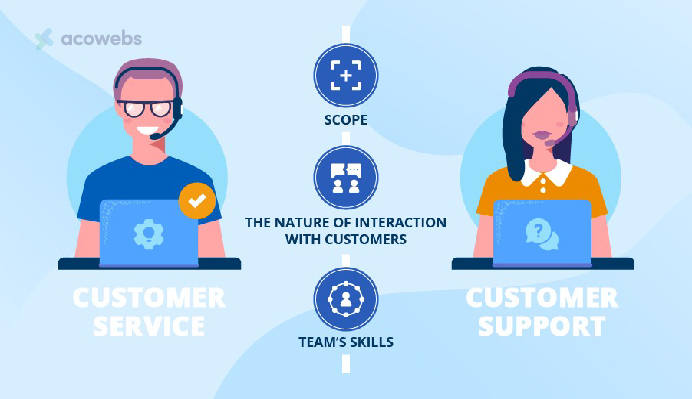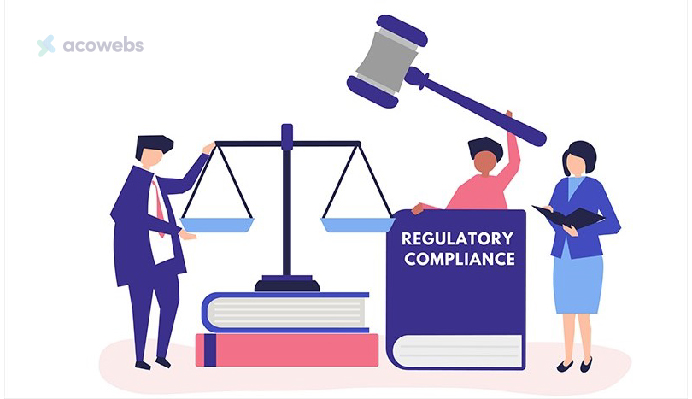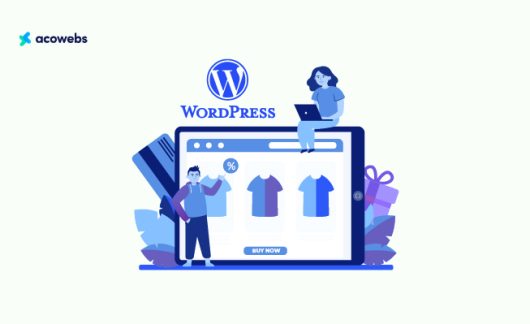Table of Contents
A successful eCommerce site launch is critical for an enterprise. On the one hand, it is a task of toughness. However, at the same time, it may be a really nerve-racking story. Nevertheless, it is not as smooth as it is thought of, and the design and the functionality are just a couple of things that should be resolved, with the marketing and the customer support, among others. You need to have a complete and clear checklist in order for your e-commerce website launch to be considered a success. This checklist should include all the necessary elements that make your website work properly. Herewith, we offer a step-by-step guide on how to create an eCommerce website. The checklist has been all done to enable your website to be launched successfully.
1. Website Design and User Experience
The design and user-friendliness of the e-commerce website are the primary elements that persuade customers to stay on the website and make them return. Today, the mobile-first era is here, so we need to come up with a design that will change regarding the screen size of various gadgets. What makes your site unique is its particular ability to function and look perfect on all types of devices, which is responsible for the uniformity of the user experience.

Navigation is another key principle of user experience. The website should be based on intuitive design and therefore clear categories must be there with the search functionality being there. Their User Interfaces should be such that the user can find what he wants without any need of unnecessary toil.
You need to make high quality images and videos for your products to be visited. Allocate a substantial budget for the development of high quality product photography and, if possible, embed detailed videos or a 360-degree view to give your clients a more interactive experience.
Website speed is another main aspect that affects a user’s experience. Slow-to-load pages could cause a bounce rate to increase and a decrease in sales. Speed up your website’s loading time by compressing images, minimize requests via HTTP, and use the browser cache as a weapon.
2. Product Catalogue and Inventory Management
Your product directory is the main structure of your eCommerce site. It is necessary to display your products in an educational, exciting and easy-to-use way. To begin, you need to write the product descriptions which emphasize the unique characteristics, benefits, and technical specifications of each product.
High-quality product images will be the key components of any successful online store. The images should be multiple, with a variety of angles, different colors and if the product has any kind of variation, these should also be captured. Consider buying professional product photography to have your product’s image of the highest quality and fit with the new style.
Thus, it is essential for the provision of clear, systematic, and logical categories for the visitors to indulge in an easier search and exploration. Make the grouping of like items easier by developing an intuitive system that showcases items in groups such as by type, style or function.
The proper inventory management method is a decisive factor that helps to avoid stockout cases and overselling. Develop a reusable inventory monitoring system that uses real-time feed to update the stock levels and display product availability.
3. Payment and Shipping Options
To ensure the customer’s convenience and pleasure, the best way to ensure a variety of payment and shipping methods is to offer the customer a large number of payment and shipping methods. When it comes to a payment system, you should provide those that are the most popular in the region you want to reach. Credit cards are usually the only way to pay, while digital payment platforms like PayPal are also frequently used.
A highly secure payment gateway would become an indispensable component of the process as it allows for safe keeping of customers’ details and guarding against fraud. It is indeed extremely vital that you choose a credible processor that has robust security features like SSL encryption and fraud detection.
Shipping also plays a big role in the eCommerce experience. Disclose the details of shipping cost, delivery time, and tracking options on your website. Think about and try offering multiple shipping methods, for example standard, faster, and international shipping, which can be adjusted to different customers’ needs and budgets. Free shipping up to a certain limit or a discount offer for orders above a certain threshold may be a very good incentive for customers to buy more and make the purchase.
4. Security and Privacy
Nowadays, safety and customers’ information are the key factors in the eCommerce world. SSL (Secure Sockets Layer) encryption is the first layer of defense to be found in the process of data transmission between your website and your customers. SSL encryption that is in place ensures that card details and personal information of a user is never stolen and rather encrypted to avoid unauthorized access.
Choosing a reliable web hosting service with robust security features and regular backups is another crucial aspect of website security. Seek out a hosting company that provides services like DDoS protection, virus scanning, and firewalls.
Creating a privacy policy that is thorough and transparent is crucial to establishing trust and transparency with your customers. The privacy policy should explicitly state how customer data is collected and used and indicate the measures for their protection. Have a clear idea of the information types you collect, e.g., names, email addresses, and browsing behavior, and how this data is used for marketing, personalization, or other purposes.
However, while data security is only a legal requirement for eCommerce operations, it is an essential component of their operations. One example would be if your audience is the European Union, you might need to comply with the GDPR, and on the other hand, if your target audience is the United States, you may need to comply with the CCPA.
5. Marketing and SEO
Though you do not have the full picture of the eCommerce site without the marketing plan and SEO in place. Explain the need for extensive research of keywords to look for the most suitable ones for your products and maybe for your industry too, also find out the ones which generate more traffic.

The following step is to make sure your website’s content is search engine optimized in a way that appeals to search engines, once you have selected your target keywords. This involves the creation of product descriptions, category pages, blog posts, and other essential web content. At the same time, place keywords throughout the content and also after some distance. Nevertheless, remember that your primary goal is to create a blog that provides valuable and helpful information for your readers.
One of the marketing strategies that can be used and optimized to both attract and maintain the attention of prospective customers is content marketing. Create enticing, informative content such as articles and guides that target the issues and concerns of your specific audience.
Social media marketing is one of the important ingredients for all-around marketing. Identify the social networking venues most popular with the target audience, where you will create a strong presence. Post exciting articles, run paid ads to reach an audience and of course, respond to comments to gain recognition and link your page to your website.
Email marketing is one of the best methods of maintaining a relationship with your leads and customers and the key to retaining them. Form an email list by giving out inducements, like discounts or unique content, in return for the subscribers’ email addresses. Develop email campaigns that demonstrate your products, share your special offers, and give your subscribers useful content that keeps them engaged.
6. Customer Service and Support
Offering the customers an outstanding service and support is key to gain their loyalty and get the customers to leave good reviews.
Introduce a customer service system, which will enable the users to reach out to the service-providers effortlessly through different channels such as live chat, email support, or a ticketing system.

Clear contact information on your website should be included to build trust and create a reputation for your brand. You need to place your mobile number, email, and physical address on your site and include them in the header or footer in order to make your customers’ journey easier and the contact information at hand.
Creating a thorough FAQ(Frequently Asked Questions) section will assist you in responding to the most common questions and concerns of the customers on time. Address product information, shipping and returns, payment options, and account management to give the customers an overview of the services you offer.
Ensuring that your customer care team is well-trained to give immediate, friendly, and helpful assistance will be very important when you are aiming for a positive customer experience. It is very important that your team has a true feeling and knowledge of your products and services, your policies, and common customer problems. Install customer-oriented systems that will emphasize active listening, empathy, and problem-solving.
7. Analytics and Performance Tracking
The monitoring of your eCommerce site performance is extremely vital because it will help you to get data-driven decisions and to make your strategies more effective. A web analytics tool is the first thing you need to implement, and Google Analytics is a good choice for that. It will allow you to get detailed traffic statistics, user behavior, and conversion rates.

eCommerce tracking set up is the first thing to do for your business to see sales, revenues and other key performance indicators (KPIs) such as conversion rates. What’s more, Google Analytics has eCommerce tracking features that enable you to monitor the number of transactions, their value, average order value, and other sales-related data.
Analyzing your website data once in a while is a key component in identifying trends, opportunities, and areas for development. Observe behavioural patterns of customers like when the bounce rate is high on particular pages or conversion rate is low for specific products.
A/B testing is one of the most useful techniques for optimisation of your website’s design, content, and functionality in accordance with the way your users behave and what they prefer. A/B testing stands for a process whereby two or more versions of a webpage or an element are created and randomly shown to users to determine which version gives better outcomes.
8. Legal and Regulatory Compliance
It is paramount that you make sure your eCommerce website complies with the laws and regulations that pertain to it so as to avert legal issues and maintain the trust accorded to you by your clients. As the first step, you should think through detailed and understandable terms of service and privacy policies that specify your business practices, user rights, and data handling procedures.

Consumer protection regulations are additionally a vital area of the e-commerce sites compliance sector. This legislation varies from country to country and state to state, but in general, it makes it obligatory that businesses are fair in the information they give out concerning their products, pricing, and shipping.
One more thing that eCommerce business owners should pay attention to is tax compliance. Whether you are a business located in one area or another, you will be obligated to charge and remit sales tax if you have customers who come from other areas. It is important that you are aware of the tax legislation and rules of the location where your organization is situated, as well as any neighboring states or countries with a robust customer base.
Based on whether you are running a business of a particular type and location, you may also need to obtain licences and permits to be legally allowed to execute your business. This can include sales tax permits, business licences, seller’s permits, or other required licences in the industry.
9. Pre-launch testing and Quality Assurance
Before launching your online store it’s imperative to carry out comprehensive testing and quality assurance to make sure that there are no bugs or glitches for your customer to encounter. Introduce by assessing all the website functionalities.
The cross-browser and cross-device tests are critically needed to provide the highest level of performance for your site across various browser and device versions. Check your website’s functionality on popular browsers like Chrome, Firefox, Safari, and Edge while using different devices like desktops, laptops, tablets, and smartphones.
In addition, load testing is the other important component of pre-launch testing. It is here that you reproduce a load of your website at high ranks so that it can be able to accommodate the volume of traffic expected without failure or slowdowns.
User acceptance testing (UAT) makes it possible to accumulate feedback and discover prospective problems in the pre-release version of your website. Recruit a group of beta testers, including both internal team members and external users, to test your website’s functionality, usability, and overall experience.
10. Post-launch monitoring and Optimization
Launching your eCommerce website is just the first step towards your business journey. It’s vital to keep in mind that the website should be frequently monitored and optimized to provide uninterrupted success based on the user’s behavior, performance data, and customer feedback. Next, you need to set goals and keep an eye on metrics that show how the website is performing, such as traffic, conversion rate, average order value, and customer lifetime value.
Customer behaviour and preference analysis is a key contributor to the process of post-launch Optimization as well. Make use of heatmaps, session recordings, and user feedback surveys as tools to know what makes users happy or sad and what challenges they encounter while on your platform.
Conclusion
With the aid of this detailed eCommerce website checklist, you can give your business a highly successful launch and a solid foundation that will help it grow in the long run. Bear in mind that online store launching is a continuous activity that requires constant monitoring, continuous Optimization, and readiness to adapt to the dynamic market environment.
Acowebs are the developers of the WooCommerce PDF Invoices and Packing Slips which generate PDF invoices automatically and add them to the confirmation emails sent to your customers. WooCommerce invoice pluginallow youCreate, edit, and modify your own templates and to download or print invoices and packing slips from the WooCommerce admin.











 Login
Login
 Cart
Cart








